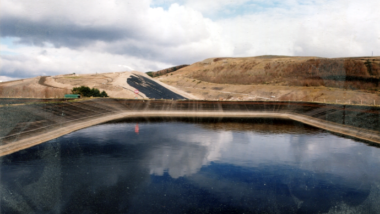Search Yahoo for leachate treatment by anaerobic filter ? All the time folks type in that exact term. They check whatever they typed in and then hit the search button. Just what motivates them to do this? The number of possible reasons is enormous.
Almost all things have both positive and negative sides; one of them generally dominates.
Let's examine a few of the main reasons, points, mistakes or actions that a person may like to avoid here.
To educate you about the big picture, it is important to know that although there are many web sites which are listed when you type in this search term the results you see are all academic studies, and a number of them seem quite encouraging that the use of leachate treatment anaerobic filter systems is a useful method for the average sanitary landfill operator to consider, that is not correct.
More specifically, you should know that the newcomer may be quite encouraged to think when reading the papers available on the web that this is a popular, tried and tested method for leachate treatment for MSW (sanitary waste landfills) which produce leachate.
Now, what actually are the potential problems here? And why might it be important avoiding them? Well, when we're considering leachate treatment anaerobic filter (also known as fixed film anaerobic filters (AFs) and Upflow Anaerobic Sludge Blanket Reactors (UASBRs), a nice approach could be to assume that these systems which seem to hold merits to some researchers, would be useful in real life leachate treatment situations, but unfortunately experts in leachate treatment have found that they are not.
Let's quickly have a look at and analyse the 3 things you need to avoid:
To start with, avoid the first misconception that because when you open a landfill or start a new cell and you see a certain leachate quality, that the quality you see at the start will be much like the quality once the waste have been present long enough for the waste to start producing methane, (about 9 months to 18 months later) indicating that the waste has become anaerobic. This is often of primary importance since although anaerobic treatment of leachates would give big benefits for very fresh leachate from new cells, once methanogenic (methane producing) conditions have established in the waste, the leachate removed thereafter has effectively already been anaerobically digested. It follows that treating it by anaerobic methods after that time makes no sense. Why repeat what has already taken place? The treatment will have little if any effect in changing the quality of the leachate.. How strenuously should this be employed? Absolutely strenuously. The fresh (acetogenic) leachate stage is short and leachate is best left in the waste, and if necessary recirculated, so that a mature (already naturally anaerobically treated) leachate is removed and treated then by aerobic treatment methods.
Second, normal static filters where the leachate flows over media to which organisms become attached and which utilise this biomass for treatment are inherently unsuitable for the normal flow of MSW leachate as it is extracted from the waste. Why's that? Leachate is a cocktail of substances and includes many compounds which are prone to come out of solution during treatment and to clog fixed media systems, and raise the inert matter content within sludge blanket systems rendering them unstable.
Thirdly, there is a much easier way than leachate treatment by anaerobic filter to treat leachate. This is a method which has become well established for leachate treatment in recent years, and hundreds of these systems are in use already with many of those having been running on landfills for more than twenty years. Why would this be important? Well, isn't it better to invest time in something you know will work than struggle with a technology like leachate treatment by anaerobic filter which many have researched but which has not been adopted in successful real-life leachate treatment situations. How could you determine whether it's sufficient or not? We suggest that you look round for leachate treatment processes which are known to be successful and recommended by experts in the field of leachate treatment.
You avoid the most significant and the large majority of all of the negatives by avoiding these three. That should go a long way in helping you solve, remove or stay away from the possible problems. The issues that first started you seeking out details about leachate treatment by anaerobic filter.




